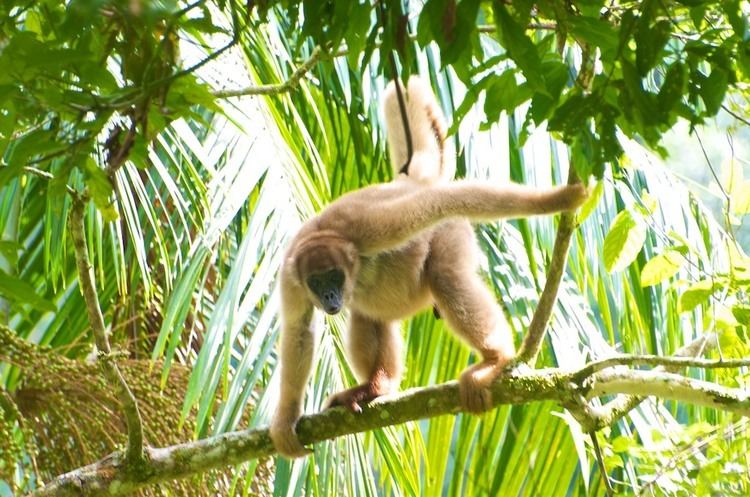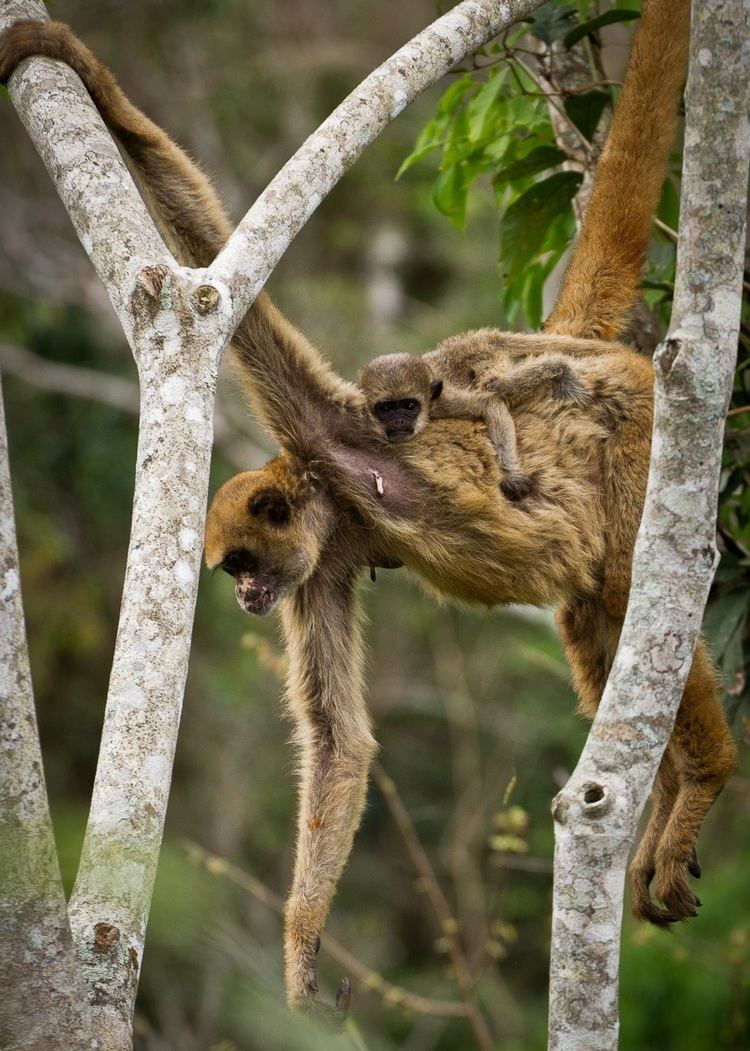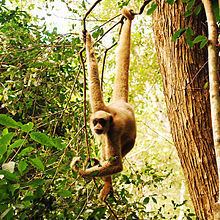Higher classification Atelinae | Phylum Chordata Scientific name Brachyteles Rank Genus | |
 | ||
Mass Southern muriqui: 9.6 – 15 kg Tail length Southern muriqui: 74 – 80 cm Length Southern muriqui: 55 – 78 cm Similar Southern muriqui, Northern muriqui, Primate, Woolly monkey, Mammal | ||
Muriqui
The muriquis, also known as woolly spider monkeys, are the monkeys of the genus Brachyteles. They are closely related to both the spider monkeys and the woolly monkeys. The two species are the southern (B. arachnoides) and northern (B. hypoxanthus) muriquis. They are the two largest species of New World monkeys, and the northern species is one of the most endangered of all the world's monkeys. They are found only in the Atlantic coast forests of southeastern Brazil at altitudes ranging from sea level to 1500 m (5000 ft).
Contents

The adult muriqui is 15-23 inches (38–58 cm) long without its tail and weighs from 10-20 pounds (4.5-9 kilos) It ranges in coloration from brown to black and the underside of their prehensile tails has no fur at the end.

Muriquis are folivores (leaf eaters), but will also eat significant amounts of fruit and flowers in the rainy season, as well as bark, bamboo, ferns, nectar, pollen, and seeds.

As is common to many platyrrhines, males are philopatric and females tend to move out into other groups at the onset of adolescence around five to seven years of age, later reaching maturity at an average age of 11 years. On average, males reach maturity in half this time. Many groups are disappearing because the females leave to seek new males, but due to the small population the females are unsuccessful. This creates serious conservation problems as groups of muriquis have no females to mate with and the females die alone.

Observed group sizes range from four to 43, and can contain plentiful numbers of both males and females. Muriquis are polygamous, and unlike many other primates, males spend large periods of time together without significant aggressive encounters. As such, they are also not territorial.

The name "muriqui" comes from a native Tupi word meaning approximately 'largest monkey'. B. arachnoides is also known as mono carvoeiro, which translates to "charcoal monkey".

